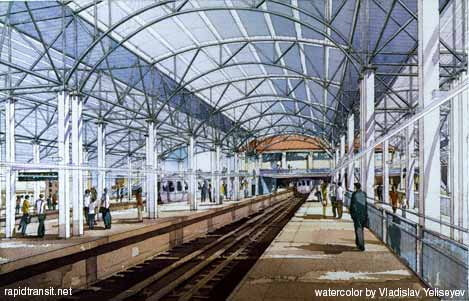
Page 3
transportation. The lines that provided service to the island began to acquire more and more commuter traffic as the City of Brooklyn began to absorb the other towns of Kings County and was itself absorbed into the City of Greater New York in 1898. The steam lines each acquired better connections to downtown Brooklyn and to New York as elevated lines reached out to connect to the city-side termini, and vice versa. It became obvious that if a convenient connection was good, through-running was better, and trolley wire was strung over each of the steam lines during the '90s so that newly electrified elevated trains could run over the surface railroads through the rapidly developing suburbs of southern Brooklyn to Coney Island.
In 1896 the Brooklyn Rapid Transit Company was formed. Though set up as a holding company, it soon became the public face of Brooklyn transportation, bringing under its wing, by acquisition or lease, most of the varied elevated railways, street railways, and passenger steam railways serving Brooklyn. The haphazard connections, improvements and interline arrangements cobbled out by the individual lines began to be displaced by a coherent vision for a unified transportation system.
In Coney Island, the first decade of the new century saw a minor consolidation of the now-electrified Coney Island railways. The Sea Beach moved out of its own terminal, then being incorporated into the Luna Park amusement park, and joined its neighbor at West End Terminal.

Views of the platform area as it will be (above) and as it looked for most of the
20th century (c.1950). Watercolor
by Vladislav Yeliseyev, provided courtesy of Kiss + Cathcart
Architects and Jacobs Engineering Group. Photo by Robert
Wasche.

Brighton Beach Line passengers had no direct access to the main amusement areas further west in Coney Island, so the Coney Island Elevated was torn down and replaced by a surface right-
of-way that brought Brighton trains directly into Culver Depot, a mile west. The Culver continued to operate trains, now of elevated stock, to Norton's Point.
©2003 The Composing Stack Inc.
©2003 Paul Matus
Updated May 1, 2003